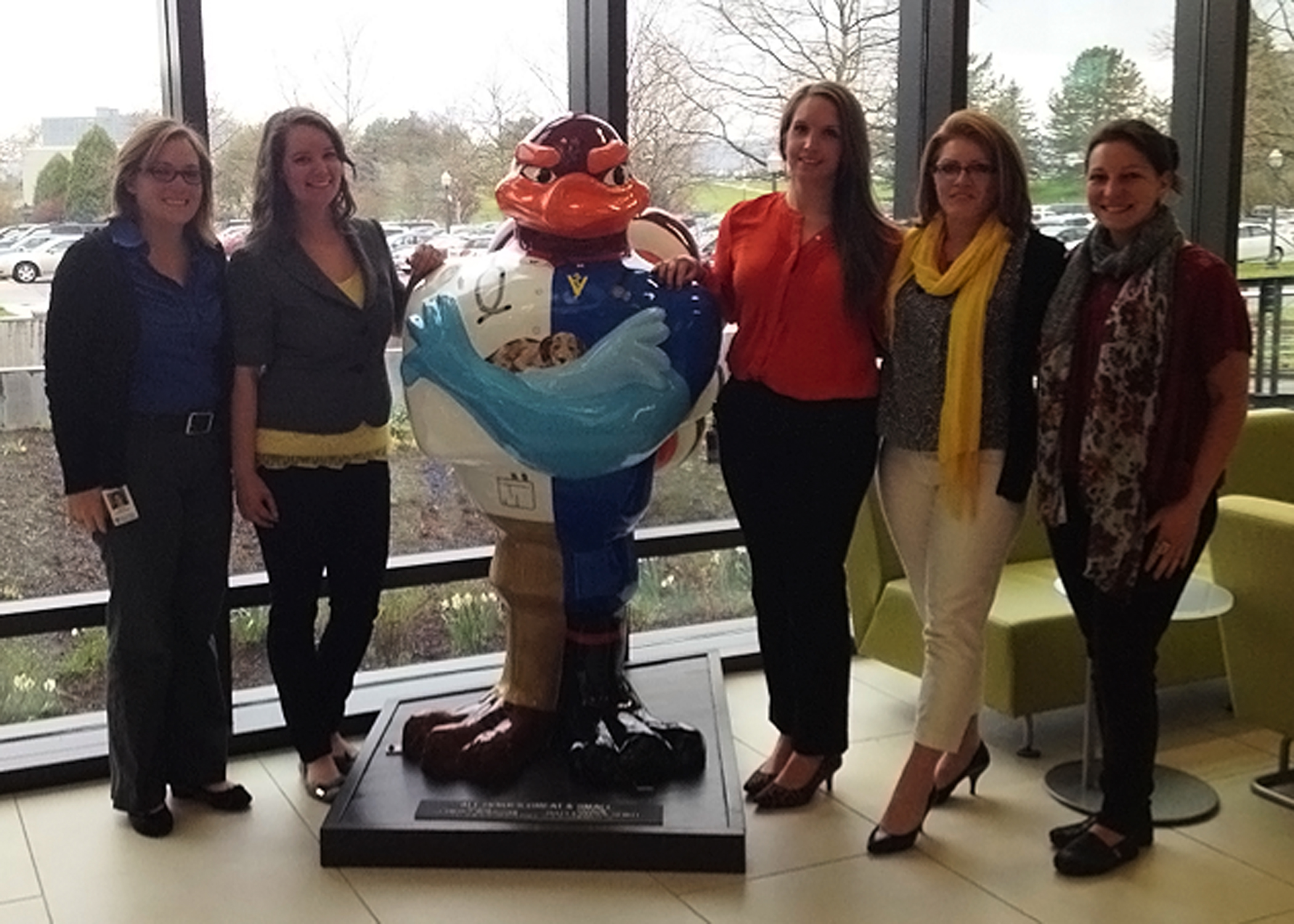New student group looks to boost female leaders in veterinary medicine

Students at the Virginia-Maryland Regional College of Veterinary Medicine are leading national efforts to boost the number of female leaders in the veterinary profession.
They are at one of only three U.S. veterinary colleges to launch a new student chapter of the Women’s Veterinary Leadership Development Initiative. Charter chapters have also been introduced at Cornell University and Texas A&M.
Since its establishment this spring, the Virginia-Maryland student chapter assembled a leadership team and hosted a panel discussion with female faculty members at the college. Student organizers already have plans for the upcoming year.
“The main reason we are doing this is to empower women,” said Maria Romano of Shepherdstown, West Virginia, a rising third-year veterinary student and vice president of public relations for WVLDI. “We want women in veterinary school to know that they are not alone in the obstacles they face taking on leadership positions and the struggles they will continue to encounter as they navigate through their respective careers. We’re focusing on the student experience, but our hope would be that the skills learned would transcend into the profession after graduation.”
Although the majority of veterinarians and approximately 80 percent of veterinary students are women, few hold leadership roles in academia or professional associations. Women account for only six out of 30 veterinary college deans in the United States and about one-fifth of leadership positions in the American Veterinary Medical Association, both statistics that mirror the gender ratio in Congress.
“This isn’t an organization solely for women, though,” said Betsy Schroeder of Johnstown, Pennsylvania, a dual degree Doctor of Veterinary Medicine and Ph.D. student and co-president of the group. “There are studies that indicate that having as few as 30 percent women on an executive board increases profitability. By promoting women’s leadership, everyone benefits. A rising tide elevates all ships.”
In May, the group hosted an “Imposters Panel” with four female faculty members at the veterinary college. The panelists were Dr. Jacque Pelzer, director of admissions and student services; Dr. Julie Settlage, clinical assistant professor of large animal surgery; Dr. Tanya LeRoith, clinical associate professor of anatomic pathology; and Dr. Bess Pierce, associate professor of community practice.“The name refers to the idea of ‘imposter syndrome,’ where individuals, especially women, feel out of place taking up leadership roles and believe they don’t ‘measure up’ to others,” Romano explained. “The event was open to everyone and well received by both students and faculty members. Faculty members on the panel were so open and honest. They gave us insight not just as women in the veterinary profession, but also as leaders finding ways to manage their family obligations and professional responsibilities.”The national initiative has been in the works for the past year. In March, veterinary students across the country participated in WVLDI sessions at the Student American Veterinary Medical Association conference in Fort Collins, Colorado. Energized by the conference, participants then formed the three charter student chapters. Students at four other veterinary schools are working to establish chapters before the start of the next academic year.“The WVLDI board is thrilled with this engagement. From my perspective, the students at SAVMA ignited a fire discussing women’s leadership issues and have done more in a short time than I dreamed possible. They give me goose bumps and make me smile picturing their futures,” said Dr. Karen Bradley, a Vermont veterinarian and president of WVLDI, in a recent announcement about the formation of the student chapters.The national organization envisions a future in which every sector of veterinary medicine fully reflects the profession’s diversity and hopes to achieve this by supporting women in seeking leadership, policy, and decision-making positions within all areas of professional veterinary activity. Dr. Valerie Ragan, director of the college’s Center for Public and Corporate Veterinary Medicine, is a member of the group’s founding board of directors and has been helping the college’s student leaders establish their chapter.In addition to Romano and Schroeder, the WVLDI student chapter officers include Sara Waltz of Raleigh, North Carolina, a rising third-year veterinary student and co-president; Laura Turner of Frederick, Maryland, a rising second-year veterinary student and co-president elect; Allison Smith of Hampton, Virginia, a rising second-year veterinary student and co-president elect; and Meriam Saleh of Knoxville, Tennessee, a graduate student in the Department of Biomedical Sciences and Veterinary Medicine and vice president for graduate student interest. Members of the chapter say they hope to add more officers to its roster in the coming year.Next fall, the group is partnering with the Student Chapter of the American Veterinary Medical Association and other veterinary student clubs to bring Dr. Elizabeth “Betsy” Charles, executive director of the Veterinary Leadership Institute, to the college for a weekend professional development workshop.This is not the first time students at the college have established a student group to address diversity issues in veterinary medicine. In 2010, students formed Veterinary Students as One In Culture and Ethnicity to enhance the diversity of the profession and the cultural competence of veterinary students. That group is now one of the most active student groups at the college.



